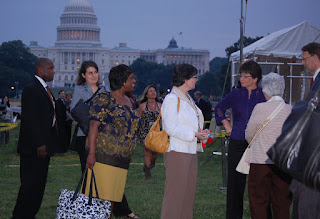
A few months back, as the new president was poised to run for office, we asked if he knew “political aikido”.
Apparently yes.
Benigno “Noynoy” Aquino III will take his oath as the 15th President of the Republic in a few hours. This will be followed by a street party at the Quezon Circle. Organizers say the ceremonies will be austere by conventional standards, though it’ll still cost a pretty penny, as pennies go in a nation where even the government’s usually rosy yardsticks show five million Filipino families live below the poverty line.
He will inherit a government wallowing in red ink, damaged by what many see as institutional corruption, heavily reliant on the dollar remittances of over ten million overseas Filipinos, and an infrastructure in dire need of repair and upgrading and, in many instances, a complete overhaul.
And so, again, Noynoy, will have to wield his brand of “political aikido” to throw down the enormous mass of challenges facing him.
But perhaps his first task is to manage expectations. Nearly every sector of Filipino society – in and out of the Philippines – have already set an agenda for him. Everyone is excited. We suspect they are more excited than the new president himself, who may have already surveyed the road ahead and wondered if he will emerge six years hence with his current mane – that already appears endangered – still intact.
Even from an outsider’s perspective, Noynoy is already carrying a tremendous load on his shoulders.
But if he could wield a crafty campaign – exposing his opponents weaknesses while concealing his strengths – then he may just have the wherewithal to wrestle with an overheated agenda.
Filipinos see Noynoy’s inauguration as a fresh start after nearly a decade of lies, deceit and scandal, as if all will now be well.
Change is what the Filipinos sought - an end to corruption and abuse; they yearned for a leader who listens, sets the example and perhaps more than anything else, who will hold her/himself accountable to the people.
But the task of rebuilding a nation can not possibly be the work of just a single individual. He may have his sister Kris to provide momentary distractions, but that will hardly move his to-do list closer to fruitition.
We are reminded of a favorite Ellen DeGeneres quip about “in the beginning God said, ‘Let there be light’. And there was light. There was still nothing but you could see it a lot better.”
More than the ritual recitation of the oath of office, the larger, more important contract is what follows after that, when the crowd at the Luneta will be asked to proclaim their own commitment to the nation.
But why limit it to the Luneta audience? Every Filipino, on the streets and at home, whether they be listening to the proceedings on radio or watching it on TV should take the oath. It is something we did at grade school, it is something we should do today. It is a reaffirmation of "nation above all else".
Noynoy, despite all the powers vested as president and commander-in-chief, is a mere figurehead of the true source of power in society – the people. Will President Noynoy – P-Noy as some now call him – change the nation? Only if he inspires Pinoys to change themselves. That would be the ultimate throw-down.


















































